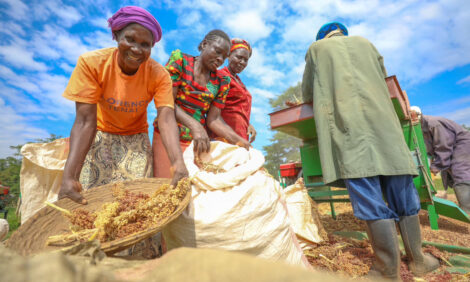



Managing intact beak laying hens
Non-beak trimmed hens can create serious pecking issuesFeather pecking is an important welfare and economic problem in laying hens. Because of national legislation or market demands, more and more hens in Europe are non-beak trimmed. The consequences of injurious pecking in non-beak trimmed hens can be much larger compared with beak trimmed hens resulting in a serious decrease of animal welfare, health and flock performance, said Nathalie Sleeckx of the Experimental Poultry Centre, Belgium, during a presentation at the https://wpcparis2022.com/.
Sleeckx and colleagues the Experimental Poultry Centre followed three flocks with non-beak trimmed hens in a controlled setup. In the first two flocks, non-beak trimmed hens and beak trimmed hens were compared. Flock 1 had 7680 Isa Brown hens while flock 2 had 10,600 Isa Brown hens, she said.
All hens within a flock had the same birth date, came from the same breeder flocks, were reared in the same rearing house and placed in identical aviaries. All groups received pecking blocks and roughage as distractions. Production data were recorded, a flock behavior checklist was performed, and plumage condition was assessed monthly, Sleeckx noted.
The aim of this study was to evaluate the evolution and consequences of injurious pecking in semicommercial conditions, she said. In flock 1 the non-beak trimmed hens showed significantly higher cumulative mortality than beak trimmed hens (25% vs 9%), lower laying percentage per hen present (-6%) and very poor plumage condition at 77 weeks of age, she added.
Both groups in flock 2 performed above breed standards until 85 weeks of age. No differences were seen in cumulative mortality and laying percentage. However, non-beak trimmed hens showed higher feed intake (+2.6 grams per hen present) and a higher feed conversion ratio than beak trimmed hens. In addition, plumage condition started to deteriorate at 60 weeks of age and more pecking behavior was observed in the non-beak trimmed hens, Sleeckx explained.
In flock 3 all hens were non-beak trimmed — 9,140 Isa Brown and 9,140 Dekalb White. Large differences were seen between the hybrids, she said. Compared to the white hens, brown hens had a significantly higher cumulative mortality (25.25% vs 5.08%), lower cumulative laying percentage per hen present (82.20% vs 88.60%), higher cumulative daily feed intake per hen present (131.92g vs 115.25g) and poor plumage condition, Sleeckx added.
The research showed that in two out of three flocks, brown non-beak trimmed hens showed poor technical results, animal welfare and health. In addition, the non-beak trimmed hens in the flock with good technical results also showed a worse plumage condition and worse behavior compared to the beak trimmed hens. White hybrid non-beak trimmed hens show better technical results and plumage scores compared to brown hybrid non-beak trimmed hens in identical conditions, Sleeckx concluded.









